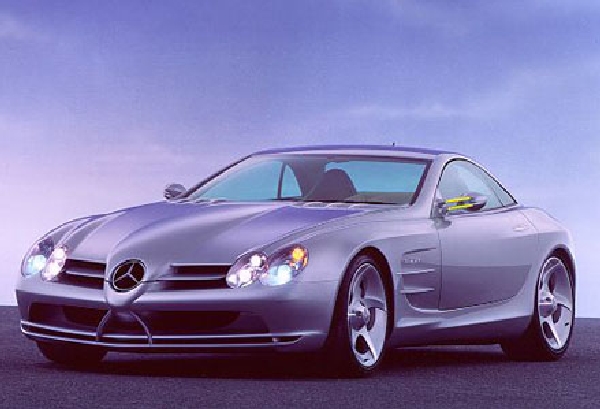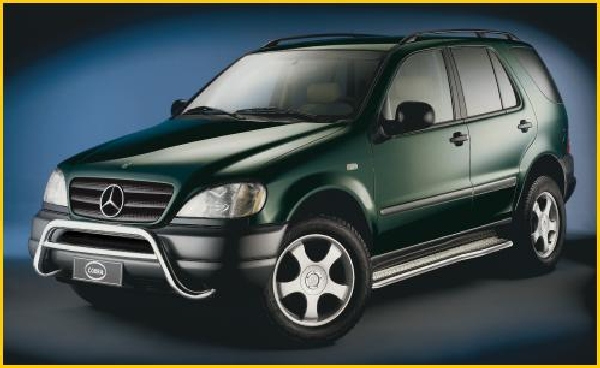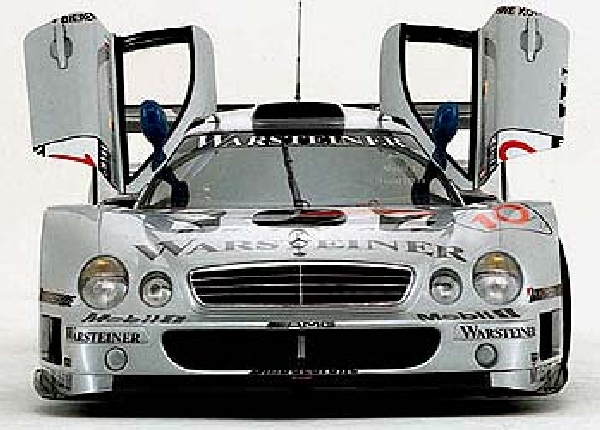Mercedes

Mercedes |
 |
| Audi | BMW | Ford (Europe) | Mercedes-Benz (DaimlerChrysler) | Opel (Vauxhall) | Porsche | Volkswagen |
Mercedes-Benz is the oldest car maker in the world. It is also renowned for building the finest luxurious cars. While Rolls Royce was satisfying with building cars slowly by hands, Cadillac was going down market, M-B always keep moving forward. It keeps exploring new technology in virtually all area - aerodynamics, high tech engines, transmission (it builds its own automatic box), suspension and safety. Considering the medium production volume, its investment in R&D per car is probably the highest in the industry. It is never bounded to tradition - 190E, A-class, Smart and ML-class are the examples.
Mercedes-Benz is one of the main subsidiaries of Daimler-Benz, which is the largest industrial group in Europe and whose business also include making truck, rocket, satellite and railways. Because of the strong background, Daimler-Benz merged with America?s Chrysler in 1998 to form the 5th largest car maker in the world, DaimlerChrysler. It was said to be an equal merge although D-B has a slight majority share of 58%. However, in recent months we saw the American are either forced to retire (including Chrysler CEO Bob Eaton) or quit the board, leaving the German in decisive control. In other words, Chrysler is actually taken over by Mercedes.
The merge complement the shorts for each other. Mercedes could help upgrading the quality control of its US partner and provide engineering service, that means Stuttgart will handle more research and development for Chrysler. Chrysler could also access the finest technology of Mercedes, especially is CDI common-rail diesel engine, low emission petrol engine, fuel cell technology and the rich experience in crash protection. This save a lot development budget and helps lowering the cost for Mercedes itself. On the other hand, Chrysler?s facilities in the US could expand the production scale of M-B and give it larger market share to the North America market.
n year 2000, the empire added Mitsubishi under its name, forming the third largest car maker in the world. Now the group becomes the first car maker having equally strong presence in USA, Europe and Japan. The loss making Japanese giant couldn't resist the takeover because of heavy debt. Just a few months later, it acquired 10% stakes in Hyundai via the close relationship with Mitsubishi, forming a superstrong strategic partnership.
Another investment in recent years is the Smart car. The idea was originated by SMH, the Swiss group producing Swatch watches. SMH asked M-B for help to put it into production, which resulted in the establishment of MCC (Micro Car Corporation), 51% owned by M-B. This is raised to 81% when the Smart needed more investment from M-B to undergo a major re-engineering in order to cure the roll-over problem. However, the expensive Smart turned out to be a sales disaster. Break even is not expected until 2002. It is expected Mitsubihi will supply platforms and components to Smart.
Sales figure2001 sales figures: 4.45 million cars for the whole group (Mercedes-Benz, MCC, Daimler-Benz and Chrysler)
LocationSubsidaryHeadquarters and R&D center : Stuttgart, Germany. Plants in Germany : Rastadt (A-class), Sindelfingen (C, E, S-class), Bremen (C, CLK, SLK, SL-class) Plants in France : Hambach (for MCC Smart) Plants in USA : Vance, Allabama (ML-class) No. of employees: 372,470 worldwide in 2001 Famouse ModelsMercedes-Benz (Germany) Chrysler (US) Dodge (US) Plymouth (US) Jeep (US) Mitsubishi (Japan) - 34% Hyundai (Korea) - 10% Daimler-Benz (Germany) - truck Detroit Diesel (USA) - engine maker MCC (Micro Car Corporation) (France) AMG (Germany) - tuner SSK - powerful and heavyweight sports car
540K - most elegant pre-war Mercedes
300SL Gull Wing - advanced lightweight sports car with gull wing doors
190E 2.5-16 Evo II - baby Mercedes attacked touring car racing by using Cosworth engine.
 |
 |
 |
 |